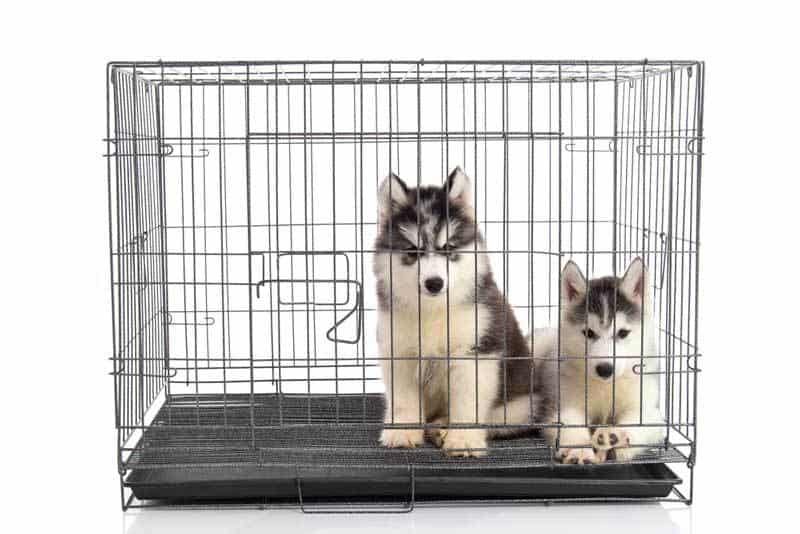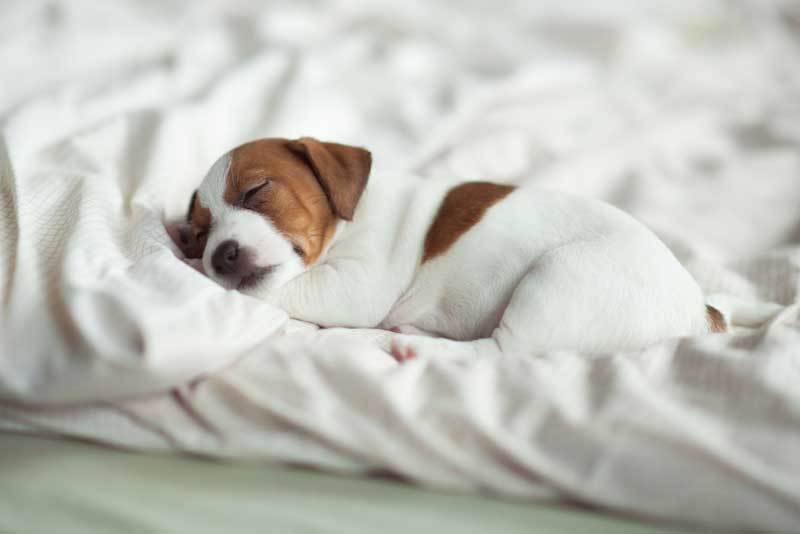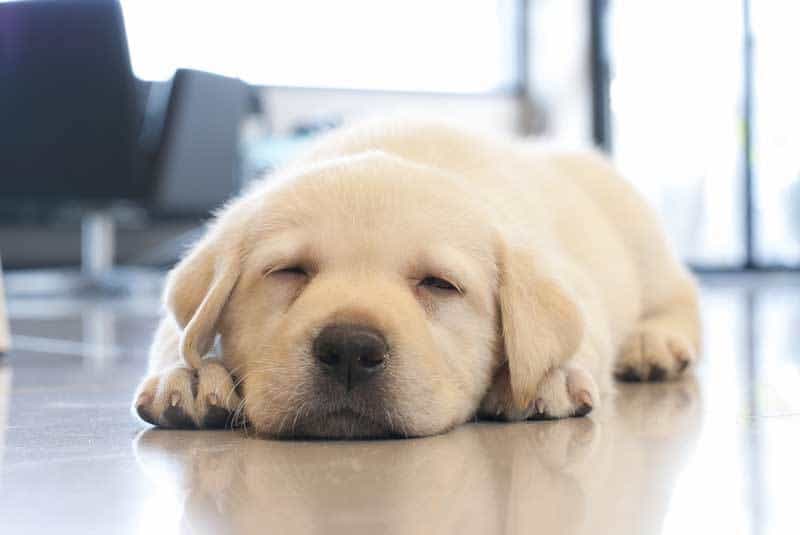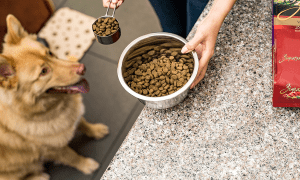“This post contains affiliate links, and I will be compensated if you make a purchase after clicking on my links.”

Is it Natural for My Puppy to Cry?
If you have asked your trainer or gone to website to find out why your puppy is whining or crying, you probably haven’t received a straight answer. Usually, you will hear that it is okay for a puppy to cry for the first several days or weeks, as long as you have made sure to take care of his physical needs. You also probably have heard that it is natural for a puppy to cry at night because it has been “separated from the pack” or because this is how puppies get the attention of their mothers under natural conditions. In truth, there is no need for your puppy ever to cry or to whine if you understand his basic nature, and how you can work with your puppy instead of against his instincts and needs.
Why Do Puppies Cry?
Puppies can cry for many different reasons, but it is important to understand that for the most part these reasons are a result of living in a human rather than in a canine world. In a natural setting, all of a puppy’s basic needs are met without needing to cry. The puppy’s food is accessible at all times from its mother. Contrary to common belief, puppies that are with their mothers do not need to whine to get their attention, but rather simply approach them to feed. When they are out in natural spaces, puppies also poop and pee whenever they have to go When puppies need physical comfort, they lie down with their mothers and littermates and press up against them. When puppies feel the need to exercise, move, and play, they do so spontaneously and have a large number of playmates present at all times.
Now compare the puppy living under natural conditions with one that you have brought into your home. You are training your puppy only to pee or poop outside, meaning that he must gain your attention to get out when he needs to go. You provide food to your puppy at your convenience not his. He is separated physically from the comfort of mother and littermates. His space to roam, play, and explore is controlled by you. All of these limitations on the puppy can lead him to cry or whine unless you create an environment for him that meets his needs.
Usually the biggest challenges for new puppy owners come at night, and it is during these hours that crying is most common for puppies. So here is what you need to know.
Should I Crate My Puppy at Night?
If you tell most trainers that you want your puppy to sleep with you instead of placing him in a crate, they will say: don’t do it. They give lots of reasons for this such as the puppy will not be comfortable because of having “too much space”. Another common refrain is that the puppy will get “in the habit” of sleeping with you, and that having a fully grown dog of 60-70 pounds in your bed ultimately will make you very uncomfortable. A third reason often given not to let your puppy sleep with you at night is that he will never become accustomed to staying in the crate when you need him to do so. But like so much else that you commonly hear about puppies, these claims are largely baseless, and there is no need to crate your new puppy at night. In fact, there are many benefits for going another way.
The Benefits of Having Your Puppy Sleep with You
Perhaps the most common reason that puppies cry is that they are missing the warmth and physical contact from their mothers and littermates that they are genetically programmed to expect. The easiest way to provide this comfort and eliminate crying is to allow your puppy to sleep with you in your bed. Puppies at are not concerned about open spaces but rather about having consistent, warm touch. This offers them a feeling of security, a sense of belonging, and ultimately of cooperation with their owners.
In addition to providing emotional comfort to your puppy, having him sleep with you eliminates one of the other major reasons for crying or whining behavior, namely getting your attention to go out to pee. Your puppy also can go to get water or food in the middle of the night if he needs it without ever having to wake you.
The “Bad Habit” Myth
Concerns about your dog getting into the “bad habit” of always wanting to sleep with you are highly overblown. Most dogs, as they grow older, seek more personal space and do not like to be touched or to be in too close proximity to others when they are sleeping. Touch ceases to be an emotional need for them. This transition usually begins by 16-18 weeks. By this point, your dog likely will not want to sleep with you in your bed, although he may want to be nearby in your room.
In a similar way, letting your puppy sleep with you at night also doesn’t mean that you can’t teach him to be crated. You can still crate him at other times of the day while you are home. For example, you could put your puppy in his crate every time your family sits down to eat dinner or when you are watching television. The puppy will become accustomed to being in the crate while you are in the house, and so when you need him to go inside, he will already have practice doing so.
What if I Want to Crate My Puppy at Night?
If you still want to crate your puppy at night, you can alleviate some of his anxiety by making his create as comfortable as possible with fluffy blankets and by putting something of yours inside, such as an old shirt, so that he can smell you at night. You should also keep his crate nearby your bed. The reason for this is not, however, so that you can hear him cry at night for you to let him out to pee. This is a common misperception that actually does lead to bad habits. You should keep him nearby you so that he can hear you at night and feel calmed by your presence.
A Big Crate for a Small Dog
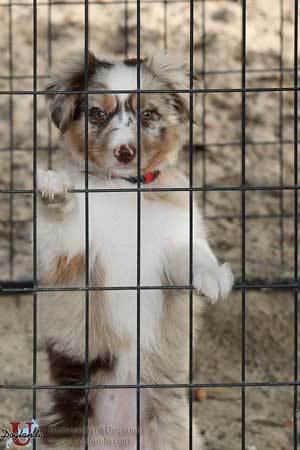
Image via Doglando.
Most dog trainers will tell you that you should get a small crate for your puppy so that he can feel comfortable in his cozy and tight surroundings. This recommendation is based on the idea that dogs are “den animals” and require a closed environment to feel safe and secure. As we have seen, this idea is only partially true. But even more importantly, keeping a puppy in a small crate means that he has nowhere to pee, and cannot get water and food if he is hungry. By placing these environmental constraints on your puppy, you are ensuring that he must cry or whine to get your attention to let him out.
The solution if you choose to crate your dog, is to get a very large crate for him. You should divide the crate into two unequal parts using a barrier. The smaller section is where he will sleep. It should be just large enough for him to get up and turn around without touching the sides of the crate. You should make this side as comfortable as possible. Your puppy will not poop or pee here because dogs require room to move around when relieving themselves, and will not go in a cramped space unless there is an emergency.
You should cut a passage into your barrier between the two sides of the crate, making sure that you smooth out any rough spots in the opening. The larger side of the crate should be empty of anything that might be of interest to your puppy. You can put down a layer of sod on this side to replicate the outdoors. The result will be that your puppy will sleep on the small comfortable side, but be able to get up in the middle of the night to pee on the larger side without ever disturbing you. You can further ensure that your puppy will not cry or whine because he is hungry or thirsty by placing his water and food bowl inside his sleeping crate.
Your Puppy, Your Responsibility
Ultimately, whether your puppy cries is up to you. By bringing a puppy into your home, you have taken on the responsibility of creating an environment that maximizes his opportunities to succeed. This is crucial not only to meet his immediate physical and emotional needs such as eating, peeing, and close contact, but also to provide for his emerging emotional, and innate needs as he grows and gains confidence, and begins to explore the world around him.
Teena Patel, LLA CPDT, has a bachelor of science degree in comparative psychology and an MBA.
Teena is founder of the Country Day School at the University of Doglando, a 4 acre educational and enrichment center in Orlando. Teena is inspired by the idea that responsible pet-ownership requires a focus on the whole dog and teaching life skills rather than amusing tricks. She has developed new training methods to teach people how to interact positively with their animals starting most critically when they are puppies, and to integrate them fully into their lives. She brought this new model to Doglando, where a staff of professional trainers engage with their canine students of all ages throughout the school day to encourage positive behavioral outcomes. Patel has earned a national reputation for her innovative approach to training and dog care, and routinely consults around the country on her philosophy of enrichment, education, and improving dogs’ behavioral health.


